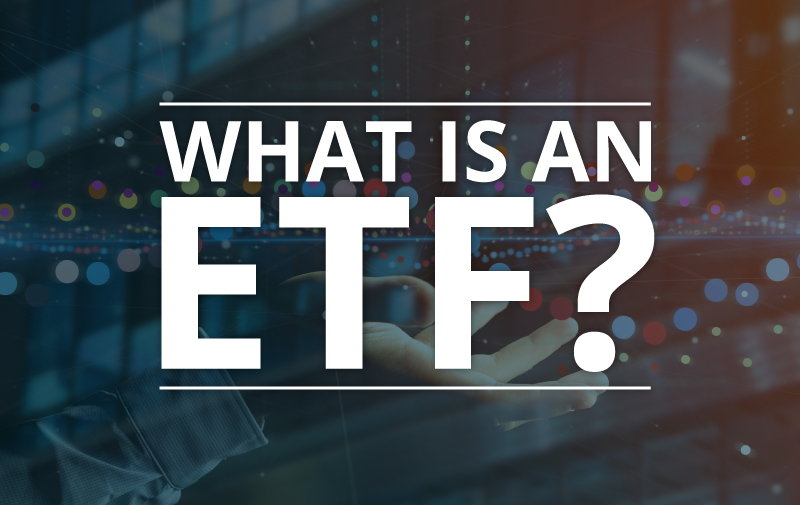What Is An ETF?
An ETF, or an exchange-traded fund, represents a portfolio of securities from traditional investments such as stocks or bonds to alternative assets like commodities or currencies, which aims to track the performance of a specific market index. An ETF is bought and sold on a stock exchange, and just like a stock, an ETF has a ticker symbol and intraday price data that can be easily obtained throughout the trading day.
Investors are increasingly drawn to the structural characteristics of ETFs, such as tax-advantaged product design, portfolio transparency, targeted exposure, liquidity and flexibility, and lower ownership costs. ETFs can be constructed to be passively (often market-cap weighted) or actively managed as well as alternatively weighted.
History of ETFs
ETFs were first introduced in the 1990’s and have experienced explosive growth since the turn of the century. There are now more than 2,000 ETFs worldwide with approximately $3.7 trillion of assets under management.[1] Although ETFs account for less than 10% of assets in the U.S. stock market, they are playing an increasingly influential role in how stocks are priced and how assets are allocated. The rise of passive investing has left companies mistrusting market signals on how best to deploy capital. But there’s more than meets the eye here, especially when it comes to headlines proclaiming a passive ETF investing bubble. While passive investing is a popular strategy among ETF investors, it is not the only strategy.
Passive ETFs
When the first ETF was launched in 1993, the purpose was simple: to provide a single security that tracks an index and trades intraday enabling investors to buy and sell the securities that make up an index with a single trade. Today, many ETFs are passively managed, often market-cap weighted, with the goal to replicate the characteristics and performance of the target index or benchmark and are rebalanced regularly. With automatic index selection, they are designed to produce average performance for the group of securities they track. As an example, the S&P 500 Index is a traditional index that seeks to track the performance of the average US stock market investor.
Active ETFs
While some ETFs are designed to simply replicate benchmark indexes and are market-cap weighted, there are a growing number of ETFs that use more sophisticated structures and advanced investment strategies. For example, there are ETFs that are actively managed in response to changing market conditions and arising opportunities. The portfolio mix of these ETFs can be changed at the discretion of the portfolio management team, allowing for greater investment flexibility. With these ETFs, the management team may not have to mirror a specific index and thus they are free to pursue the ETFs investment objective by adjusting the portfolio as they see fit. Some managers will seek higher absolute returns, while others will seek to provide high levels of income. In some cases, the active manager is not aiming to outperform a benchmark, but rather may be trying to mitigate risk or provide an uncorrelated return stream.
Dual Strategy ETFs
Some ETFs, known as Smart Beta ETFs, represent a type of actively and passively managed ETF that may be based on an index or other benchmark but employ rule based strategies, performance models or analytical metrics such as company fundamentals or sector weightings to assemble a portfolio that seeks to outperform conventional indexed based strategies. In contrast to market-cap weighted ETFs, smart beta ETFs sever the link between price and portfolio weight. They are rules-based and provide access to a variety of risk factors such as low volatility, quality or momentum. Some smart beta ETFs are actively managed with the goal of outperforming a stated index, while others are passively managed with the objective of tracking their respective indexes.
As ETFs have steadily increased their market share, concerns have surfaced about the influence of passive ETFs on the market and whether demand for these funds can inflate stock values and create fragile bubbles. Yet, while passive investing is a popular strategy among ETF investors, both actively managed and a hybrid of the two exist. Further, ETFs are transparent in their investing process with all actively managed ETFS required to disclose to the public their holdings every day, while some, but not all, passively managed ETFs may post their holdings on their websites daily. ETFs also are subject to specific reporting requirements including the 13-F report, which we look forward to further exploring in next week’s blog.
Audrey Gibson, Analyst
[1] Investment Company Institute. (2019, March 28). ETF Assets and Net Issuance February 2019. Retrieved from www.ici.org/research/stats/etf/etfs_02_19


Leave a Reply